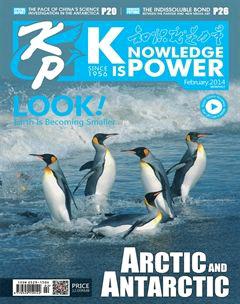Eskimo And The Fourth World
There is always something that we can not accept.
If you say to an European: “ Hi, are you from Africa?” He may frown at you.
If you say to an Eskimo:” Hi, are your ancestor Asian?” He will not accept that at once.
For people all think themselves born in this place, how could they migrate from other lands?
However, this is the only possible explanation of the Archaeological evidence, no matter you believe or not.
The Origin of “Eskimo”
The word “Eskimo” tells us a story: In about the 18th century or even earlier, the western explorers began to march to the Arctic. They firstly reached the regions, where the Indians lived together. They asked the Indians that whether there were people in the north. The Indians answered that there were “Eskimos” in the north, and they were people who eat raw meat. After that, the explorers called all the people they met in the north “Eskimos” indiscriminately.
The native residents living in the Arctic didnt know why those foreigners called them “Eskimos”. Finally, they understood that “Eskimos” means “people who eat raw meat”, and became angry. They lodged a protest and thought that was a kind of insulting. However, the word “Eskimos” was already in peoples minds. It appeared in the news and papers of different countries and different languages. They couldnt help but accepting that.
Are they really Asian?
I went to the Arctic for the first time in 1991, and flied to Barrow the far north of Alaska. I was frightened as soon as getting out of the plane, as the yellow race people were full of the waiting room. I thought the plane flied the wrong course to some place in Asia. That was my first time to contact with Eskimos.
Although we have the same faces, the Eskimos did not welcome me. They dont like foreigners entering their homeland, taking over their jobs, polluting their environment, disturbing their lives or defaming their cultures. About 6000 years ago, as the last ice age ended, the hunting people from mid-Asia marched to the north, crossed the Bering Strait, reached Alaska for the rich plants and plenty of animals. At that time, there were already Indians living in the south of Alaska and the vast areas to the south of Alaska. These group of people had to spread along the edge of the Arctic Ocean to Greenland in the east. In the long history of hundreds years, they had contacted with the outside world, struggled against the natural environment all by themselves, and survived in the hard conditions. They ascended peoples ability of bearing coldness, wildness, hunger and loneliness to a new height, and formed their own special traditions and cultures.
Its incomplete for
the saying of Inuit
After I came back from my first investigation to the Arctic, there was a journalist interviewed me and talked about “Eskimos”. I told him that “Eskimo” had a derogatory sense in it, the Eskimos didnt like this name, and they called themselves “Inuit”. As the interview was reported, it drew lot of attentions. As we always respect the ethnic minorities, an unwritten rule appeared: we wouldnt call the people “Eskimos” but “Inuit” since then.
Actually, not all the Eskimos call themselves the “Inuit”, only those live in the north of Canada and Greenland call themselves the “Inuit”. The Eskimos live in the north of Alaska like to call themselves “Inupiat”, while the Eskimos live in the middle and west of Alaska and Russia like to call themselves “Yupik”. However, they all admitted that they are Eskimos. Its obtrusive and unfounded to use “Inuit” to represent all the Eskimos.

